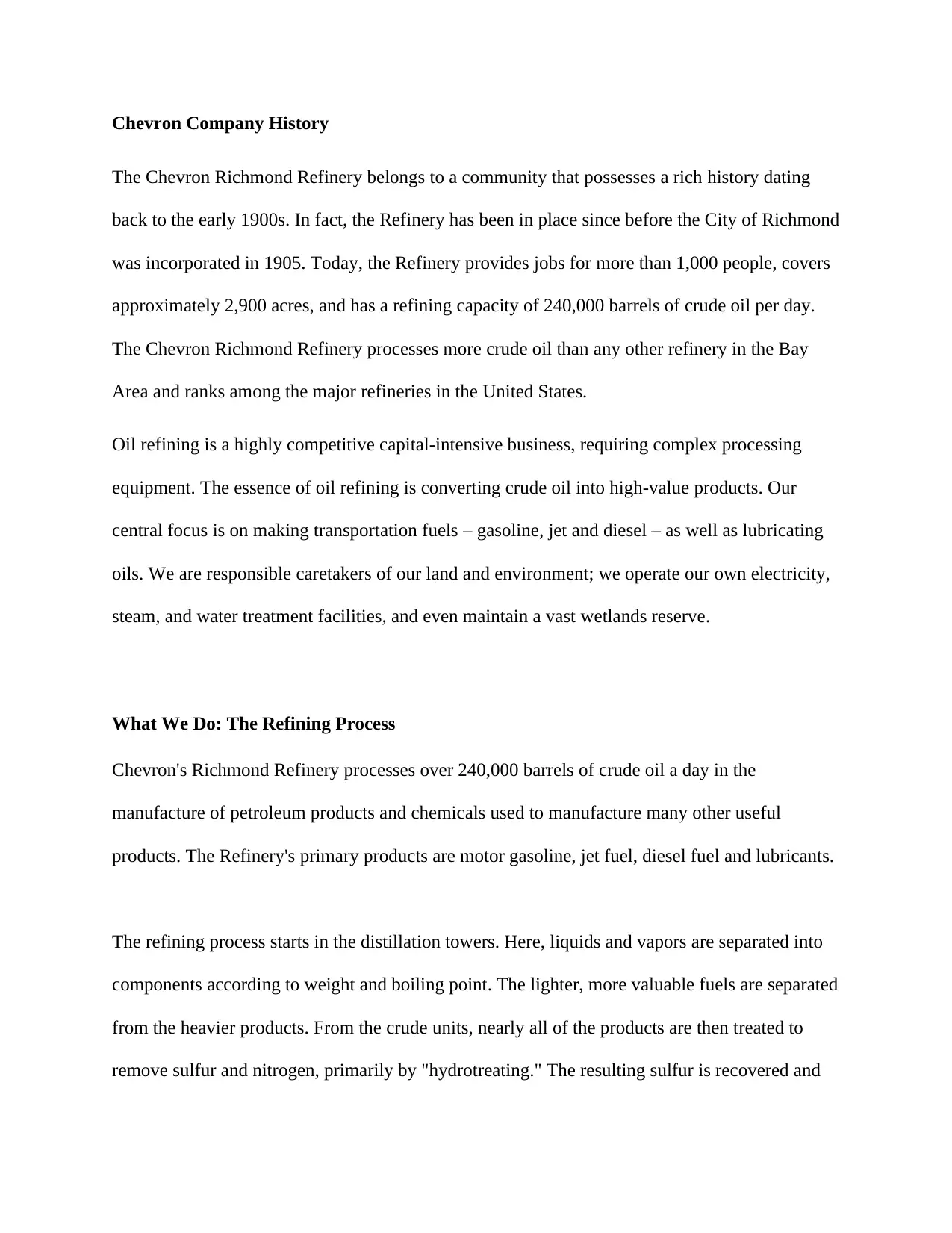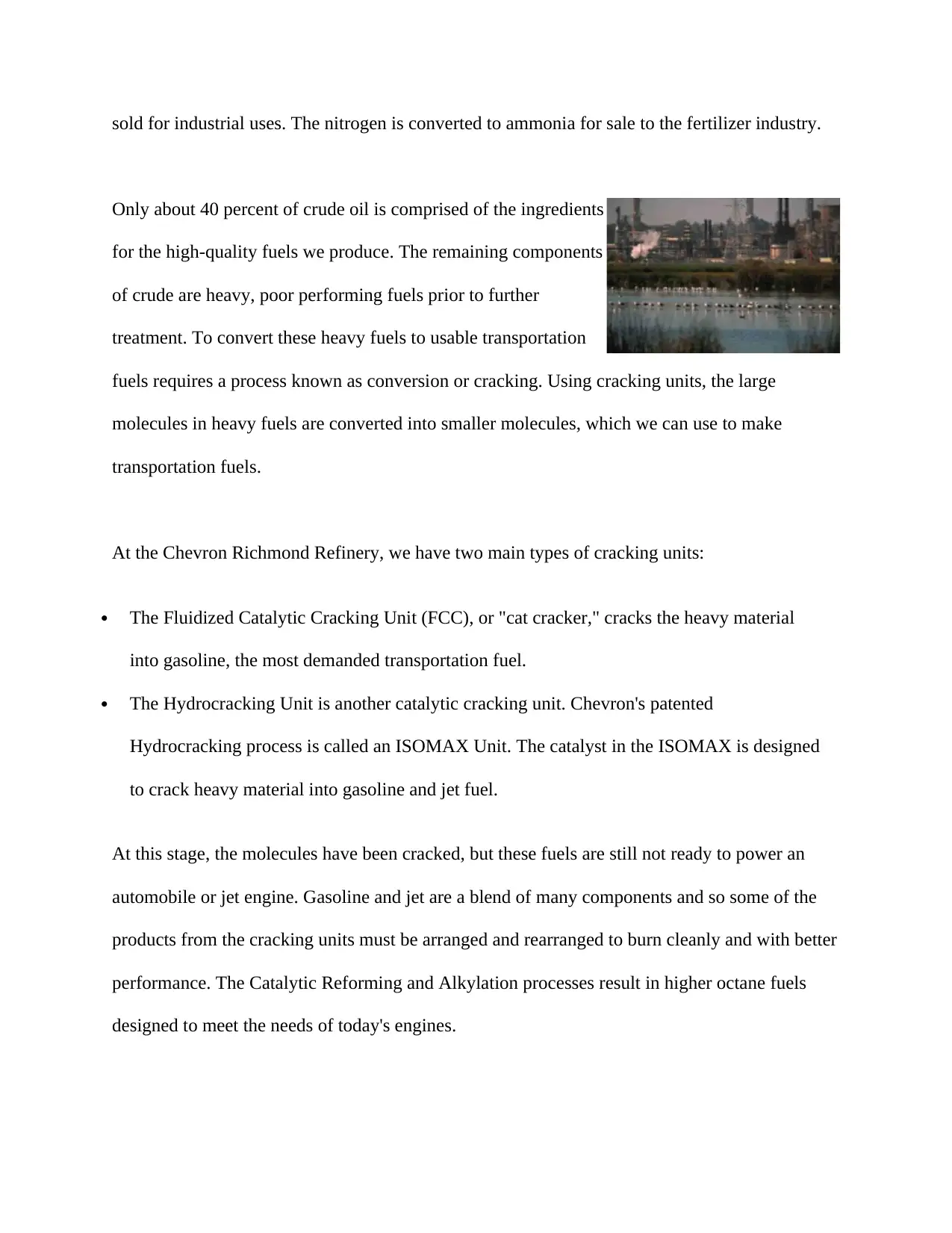Report on the Chevron Richmond Refinery's Operations and Processes
VerifiedAdded on 2019/09/22
|4
|618
|207
Report
AI Summary
The Chevron Richmond Refinery, with a rich history dating back to the early 1900s, is a major player in the oil refining industry, processing over 240,000 barrels of crude oil per day. The refinery's primary products include gasoline, jet fuel, and diesel fuel. The refining process begins with distillation, separating crude oil into various components. Subsequent processes like hydrotreating remove sulfur and nitrogen, while cracking units, such as the Fluidized Catalytic Cracking Unit (FCC) and Hydrocracking Unit, convert heavy fuels into usable transportation fuels. The report details the catalytic reforming and alkylation processes which result in high-octane fuels. Finally, the finished products are blended with additives and stored for distribution via tanker, truck, or pipeline. The refinery focuses on producing clean-burning gasoline that meets stringent global requirements.
1 out of 4











![[object Object]](/_next/static/media/star-bottom.7253800d.svg)